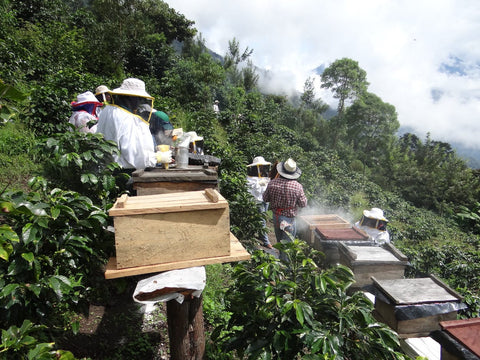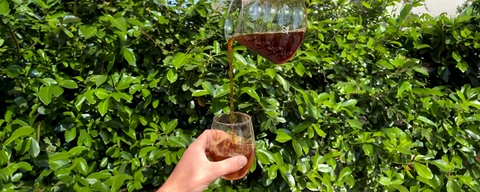First Published - April 18, 2018 (By Rudy – Cupping Guru)
One of the trends we’ve seen a noticeable rise in over the past few years, is the popularity of decaffeinated coffee. No longer does decaf need to mean ‘not great coffee’. We’re particularly proud of our new Decaf Andes Mountains Organic, Peru and we now even have a full range of decaf coffees. Key to what makes a good decaf is how is the decaffeination process. We get asked a lot about how the process works. So I thought I’d take the time to explain a little more about what makes a decaf…a good decaf.
What is caffeine?
Caffeine is a natural molecule developed by certain plants to repel insects and prevent other seeds nearby from germinating- which is somewhat a survival mechanism. To animals and human beings it also is a nervous system stimulant that improves cognitive performances (eg: reduced reaction time and increased wakefulness) as well as physical performances.
Why would you want to take it out then?
Whilst caffeine is hardly dangerous for us in its natural form (it would take ~70 cups of coffee in a day to be life threatening) past the fourth or fifth cup it can cause some undesired effects such as reduced sleep quality and anxiety- Decaffeinated coffee can allow us to keep enjoying all the goodness of a cup of coffee without the adverse effects!
It is worth noting that there is no known coffee cultivar that bears caffeine-free cherries. So, to produce decaf coffee we need to extract that caffeine from the seeds. This implies an extra processing step which induces extra labour and operation costs to that of regular coffee.

|
The plant where our coffee is decaffeinated.
|
Harnessing the power of nature:
The only ingredients used in our decaffeination process are water and carbon dioxide which means it is completely organic !
(A word of caution though- this process does not make a coffee organic if it wasn’t grown with organic practices, it only allows an organic coffee to retain its certification as it is entirely produced organically from seed to roasted bean, including the decaffeination process.)

|
Spot the difference: The decaffeinated beans are on the left.
|
Carbon Diawwwhat? Hang on, this doesn’t sound natural to me!
Ha yes- it kind of sounds like a “Breaking Bad” experiment, doesn’t it? Carbon Dioxide is also commonly called CO2. It’s a natural gas that we find all around us- animals and human beings exhale CO2 when they breathe, whilst plants absorb it to grow. It’s 100% natural!
Soo- are you saying that if I blow on my coffee I can remove the caffeine from it?
Hmm no, not exactly- to be able to draw out caffeine CO2 needs to be turned into its liquid form (called a solvent). In other words it needs to be pressurised to 5 bars which is about five times the normal pressure at sea level!
Water will be steamed onto the unroasted coffee beans to open their pores and enable the liquid CO2 to take in the caffeine which will then be pumped into an “evaporator” where it will be changed into gas again so that the caffeine can be separated. It will then be re-pressurized into its liquid form and re-introduced into the coffee beans. This is a slow process that goes on until virtually all caffeine has been removed from the seeds- this can take up to four days!

|
Caffeine after it’s removed
|
Is all the caffeine removed? What happens to the by-product?
The EU regulations set the maximum caffeine content at 0.1% after any decaffeination process which means 99.9% must be removed. Our chosen facility has set its upper limits to 0.08%, in other words 99.92% caffeine will be removed at the very least.
The caffeine removed is then collected in the form of powder and compacted into chalk-like sticks. It is used in the pharmaceutical industry (eg: flu tablets), food industry (eg: cola, energy drinks) or sold in its powder form.
Does CO2 absorb other elements from coffee beans? My decaf coffee looks different from normal beans.
No, only caffeine is removed from the beans. As you might have noticed the appearance of the coffee beans is somewhat affected by the process which can help differentiate decaf from regular beans if you ever have a doubt- although all the aromatic and flavourful compounds are still locked in the coffee cell, they tend to take a chocolate-like colour with a dark centre-cut which is somehow reminiscent of Bourbon biscuits.
I hope this has helped unravel some of the mysteries around the CO2 decaffeination process.
IF YOU FANCY SOME DELICIOUS DECAFFEINATED COFFFEES YOU CAN FIND OUR FULL RANGE HERE


